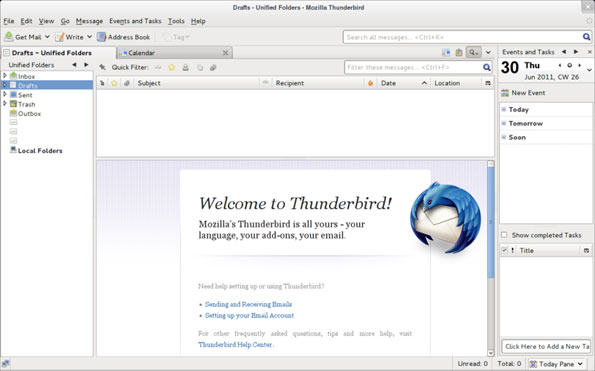

Web browsers don't naturally download and store material such as email messages. Your messages would be stored in the cloud so it's not suitable for you. Webmail is based on working with an email account via a Web browser. You use the Thunderbird program to recieve and send email messages, in conjunction with an email provider such as your ISP or someone like Googlemail, gmx, Yahoo, .Ģ. # POP: you use an email client which collects the messages from the server, deletes them and makes copies of them on your computer.ġ.

# IMAP: you use an email client to look at your email # webmail: you use your browser to look at your email computers, phones, tablets) where IMAP allows all your email to be available to each of your devices. Having said that, some modern email clients seem unwilling to support POP, in the light of the increasing trend of users having multiple devices (e.g. In other cases, it may only detect an IMAP server and you need to feed it the appropriate settings to make it connect using POP.īy and large, it's not the email client that determines the choice between POP and IMAP you can only use what the server offers. Where Thunderbird is aware of there being both IMAP and POP, it will offer you the choice. Thunderbird will by default use IMAP, but most email providers also support POP. IMAP can be used in a way that removes messages from the server. 3 is the only one which by its nature removes messages from the server. POP: you use an email client which collects the messages from the server, deletes them and makes copies of them on your computer.ġ and 2 both leave messages on the server, on "in the cloud" to use modern parlance.IMAP: you use an email client to look at your email.webmail: you use your browser to look at your email.You read the messages in that mailbox in one of three ways: Messages sent to you arrive in a mailbox, which is managed by a server on the internet. It works through servers and you use the internet, or parts of it, to connect to them to get and send your email messages.


 0 kommentar(er)
0 kommentar(er)
